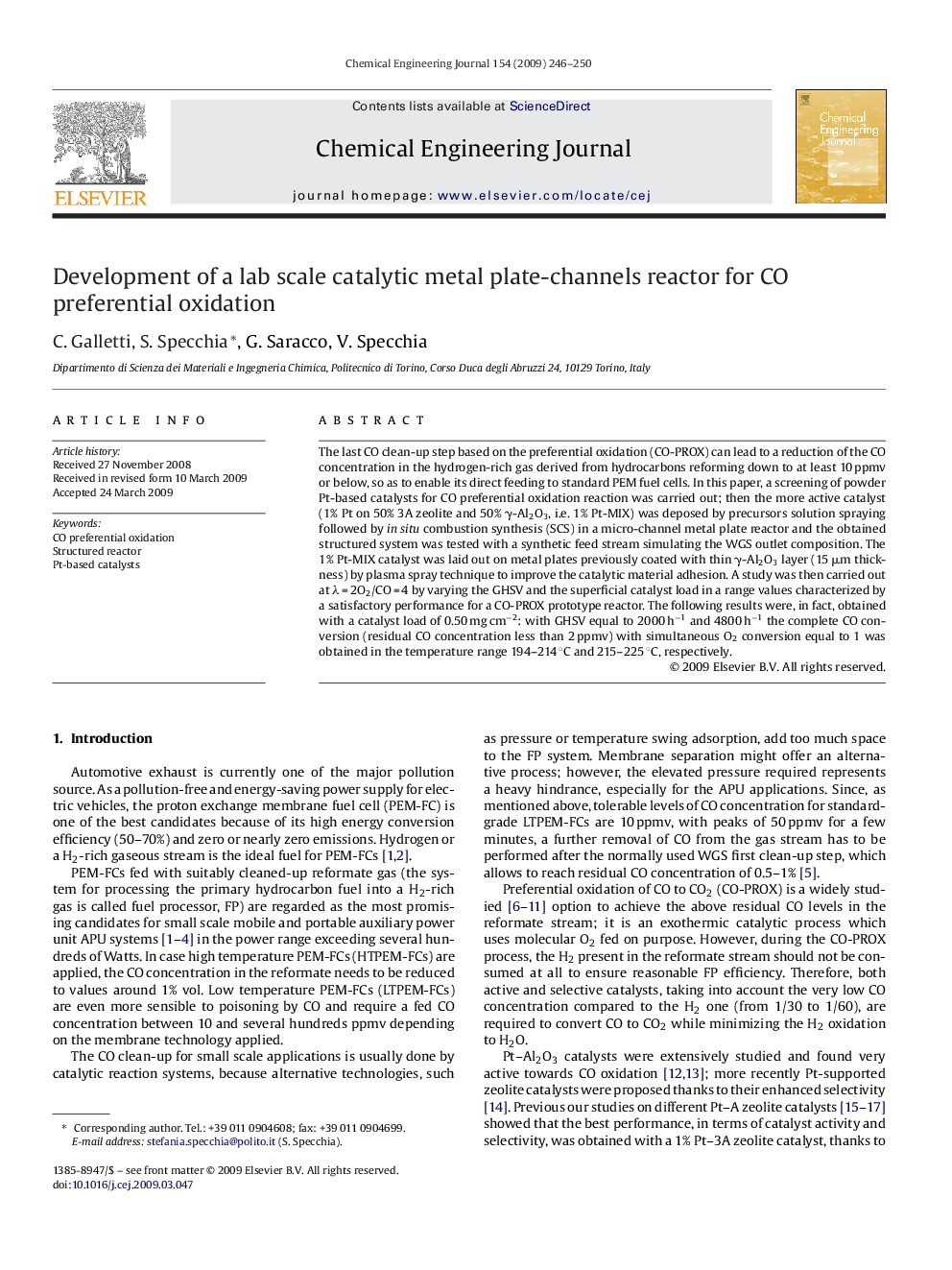| Article ID | Journal | Published Year | Pages | File Type |
|---|---|---|---|---|
| 153544 | Chemical Engineering Journal | 2009 | 5 Pages |
The last CO clean-up step based on the preferential oxidation (CO-PROX) can lead to a reduction of the CO concentration in the hydrogen-rich gas derived from hydrocarbons reforming down to at least 10 ppmv or below, so as to enable its direct feeding to standard PEM fuel cells. In this paper, a screening of powder Pt-based catalysts for CO preferential oxidation reaction was carried out; then the more active catalyst (1% Pt on 50% 3A zeolite and 50% γ-Al2O3, i.e. 1% Pt-MIX) was deposed by precursors solution spraying followed by in situ combustion synthesis (SCS) in a micro-channel metal plate reactor and the obtained structured system was tested with a synthetic feed stream simulating the WGS outlet composition. The 1% Pt-MIX catalyst was laid out on metal plates previously coated with thin γ-Al2O3 layer (15 μm thickness) by plasma spray technique to improve the catalytic material adhesion. A study was then carried out at λ = 2O2/CO = 4 by varying the GHSV and the superficial catalyst load in a range values characterized by a satisfactory performance for a CO-PROX prototype reactor. The following results were, in fact, obtained with a catalyst load of 0.50 mg cm−2: with GHSV equal to 2000 h−1 and 4800 h−1 the complete CO conversion (residual CO concentration less than 2 ppmv) with simultaneous O2 conversion equal to 1 was obtained in the temperature range 194–214 °C and 215–225 °C, respectively.
